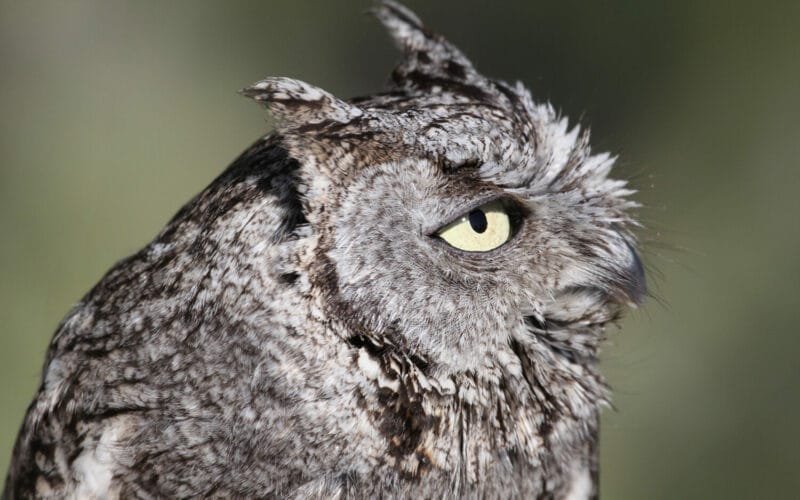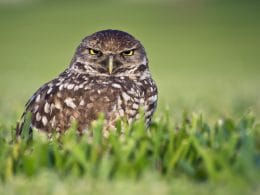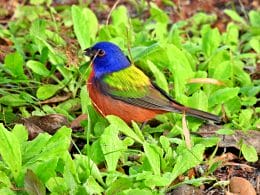These tiny birds are a huge favorite in the U.S. We love seeing them, feeding them and eagerly await their arrival each year. But what do we know about their mating rituals and nesting requirements? In this post we will be finding out!
About Hummingbirds
According to the American Birding Association (ABA) there are a possible 24 species of the hummingbird family Trochilidae that visit America. However, these include birds like the Plain-capped Starthroat and the Bahama Woodstar, which are rare visitors to Arizona and Florida respectively.
Around 15 species are U.S. residents and they are all migratory, except for the Anna’s Hummingbird. Hence, we will look a little more closely at this bird.
Anna’s Hummingbird (Calypte anna)
Appearance

The male Anna’s Hummingbird has typically green and buff coloring on the body but the head is a vivid pink/purple. Notice the bill is straight.
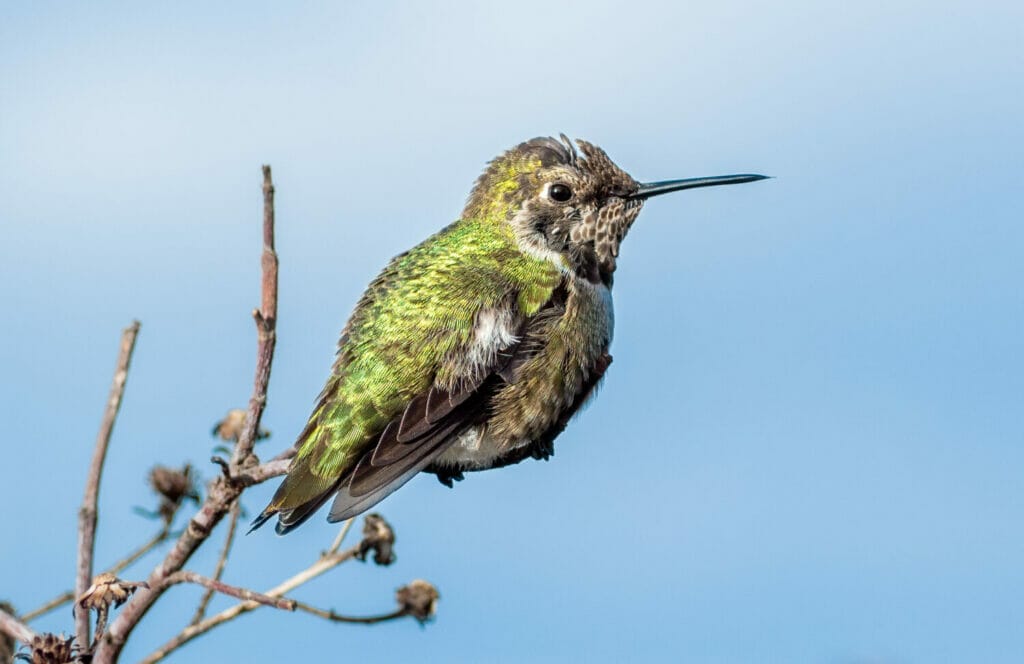
The female Anna’s Hummingbird has the same green sheen to her back and pale front. Her throat is a mix of pale and dark feathers along with some purple flecks.
Size
The Anna’s Hummingbird is not the smallest species but consider this. They are smaller than a golf ball and weigh less than a nickel.
- Length: 3.9 in (10 cm)
- Weight: 0.1-0.2 oz (3-6 g)
- Wingspan: 4.7 in (12 cm)
Distribution
The Anna’s Hummingbird can be found across continental American and into Canada and Alaska. Is is resident primarily along the West Coast of the U.S.
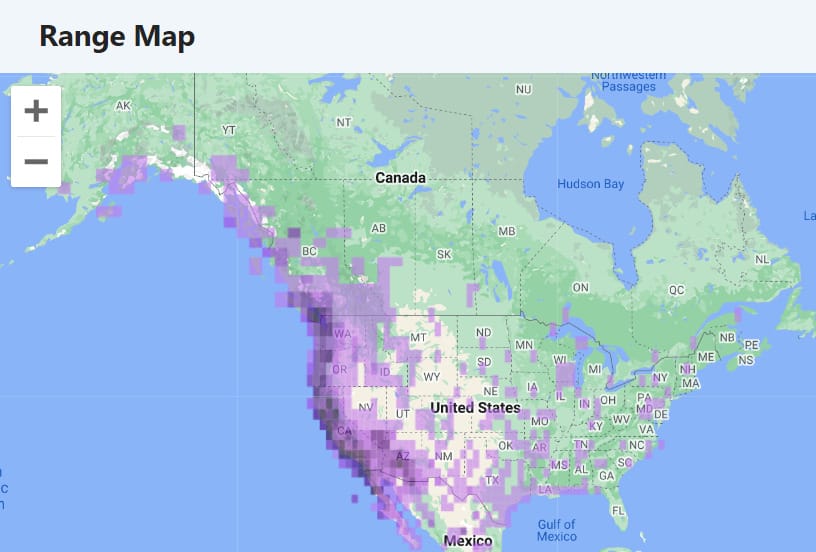
Migration
Having said that they do not migrate, the Anna’s Hummingbird are partial migrants. Consider the map below:
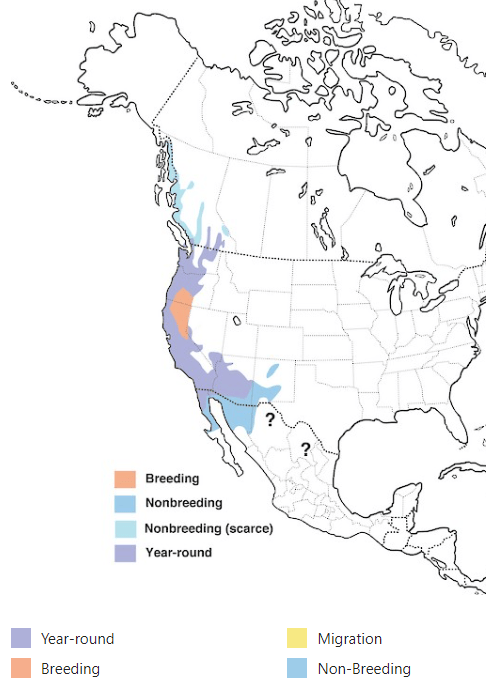
There is a lot of confusion about which populations of Anna’s Hummingbird migrate but it is clear that they follow food and that after breeding, some birds move towards the south east mountainous areas.
Breeding
Timing of nesting
Anna’s Hummingbirds nest in the winter and may continue throughout spring and into summer.
Nest location
The female hummingbird chooses a location for the nest and it may well be close to a previous one. It is usually between two and six meters high up on a horizontal branch. Most nests have some protection from the weather in the form of overhanging branches.
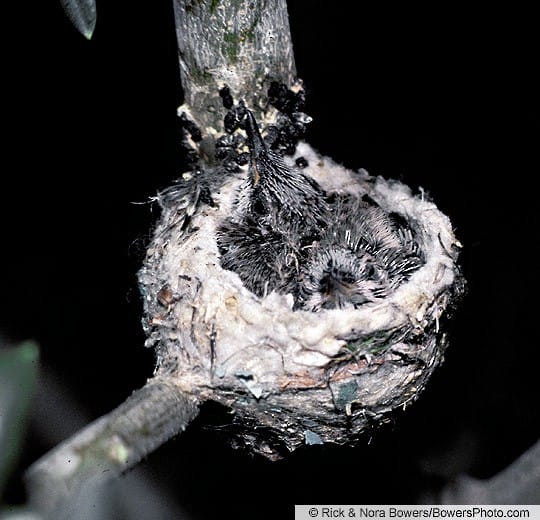
Nesting material
The birds use a wide range of material to build their nest and these may be natural or manmade. Materials and sources include:
- trees like oak, fir, sycamore and eucalyptus
- plant material from ferns, shrubs and even poison ivy
- spider webs
- phone wire
- other flowering plants like acacia, honey mesquite and apple

Construction
The female bird builds the nest by alternating structural material with downy material. Once the base is built, she will sit on it and build the walls around her. The inside of the nest is lined with down or plant material and she uses hair or webs to bind the nest together.
Studies have shown that it can take up to 7 days to complete the nest.
Nest size
When completed, the nest is a cup and its size is:
Outside diameter: 1.5 – 1.7 inches
Inside diameter: 1 inch
Outside height: 1.3 – 1.6 inches
Inside height: 0.6 – 0.7 inches
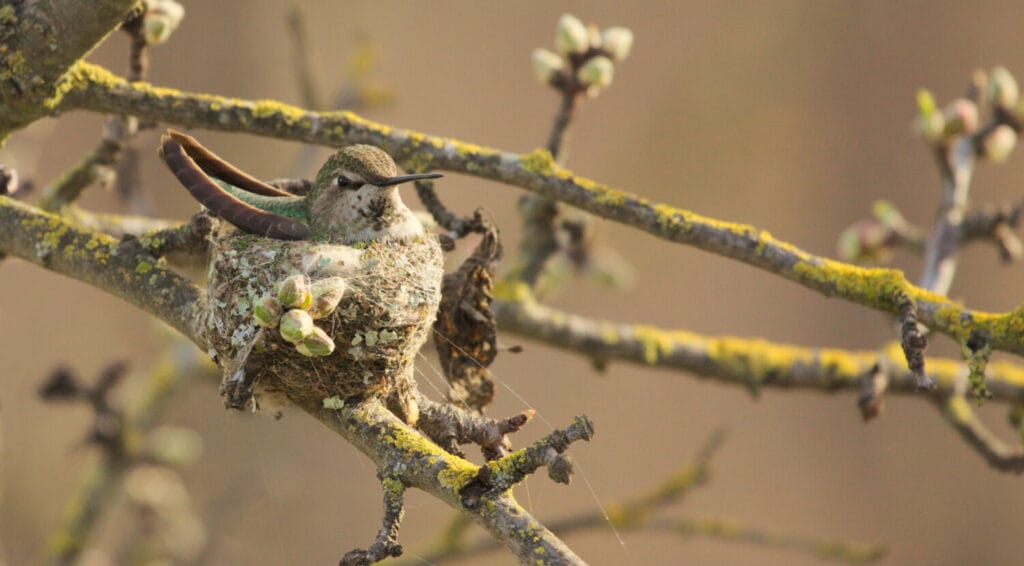
Using the nest
The female will usually lay 2 eggs in the nest and the average incubation time is 16 days. Hatchlings are incredibly small and totally helpless, not even able to open their eyes until 5 days old. By day 7 they begin to grow feathers and by day 9, they weigh as much as their parents.
Fledglings leave the nest at between 18 and 23 days old. Unlike their busy parents, the young birds spend a lot of time sitting. Hummingbird legs and feet do not support them well enough to walk as such. So until they are strong enough to fly and hover as much as adults, they rest and gain strength.
The parents will keep feeding the fledglings for around another week and by 10 days out of the nest, they are pretty much independent.
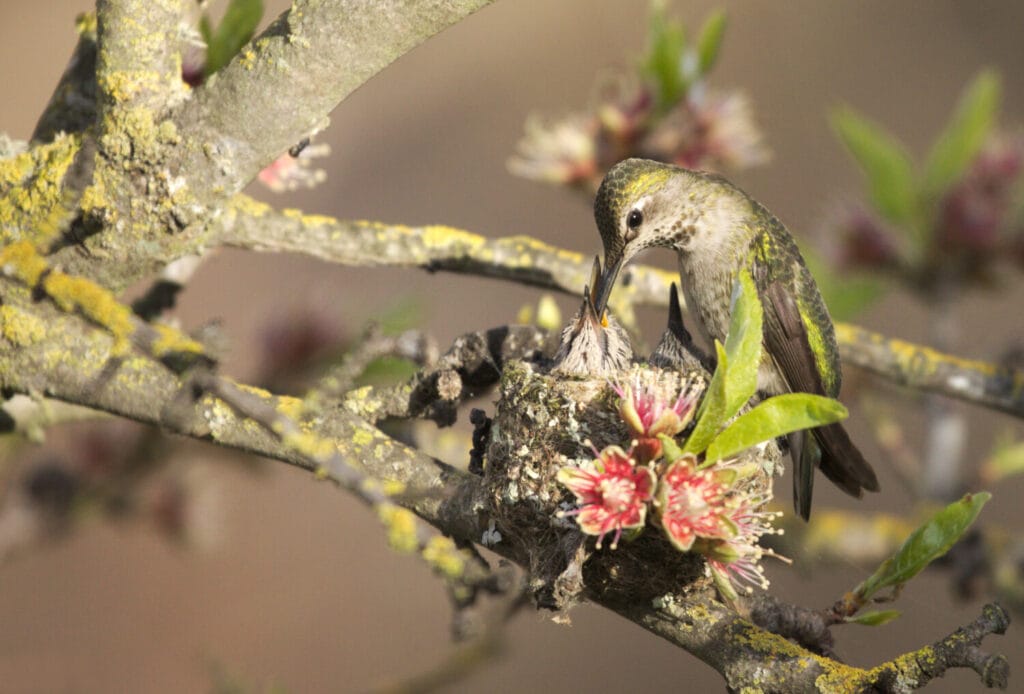
Conclusion
This little bird is simply amazing, I think we can all agree. The challenges they face and the sheer small size of them makes their success remarkable. Anna’s Hummingbirds are one of the most frequent visitors to backyard feeders in the U.S. So if you want to see them, start there. Putting out and maintaining feeders is a great way to encourage them into your garden and you never know, they might even nest there.
I hope you enjoyed reading about this hummingbird!
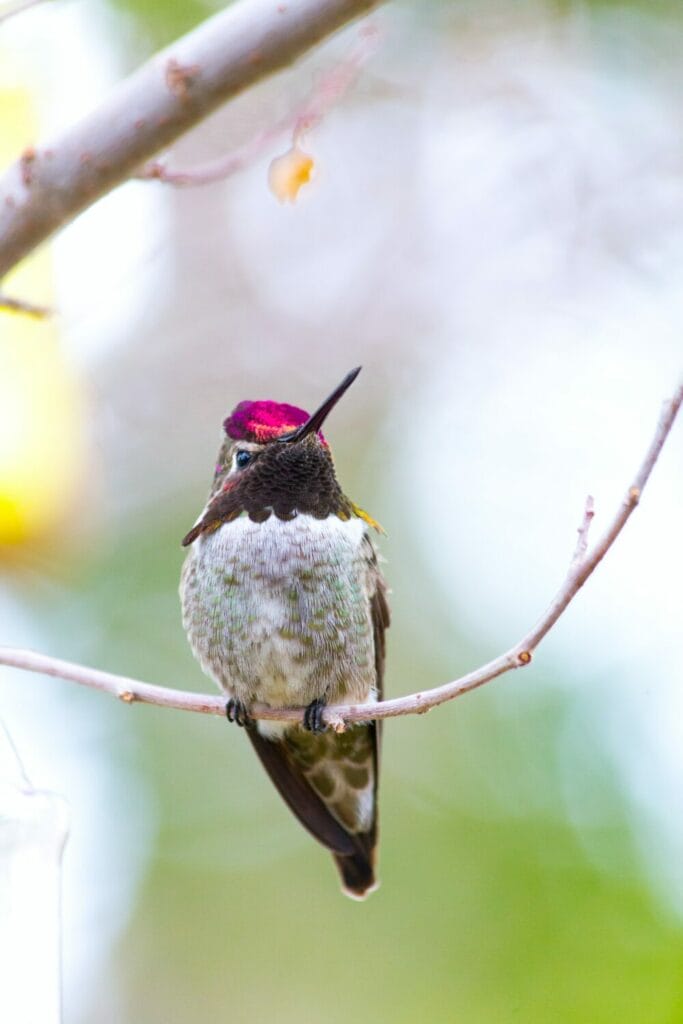
FAQ
Hummingbirds have a gorget which refers to the bib of color under their throat. The Anna’s Hummingbird has particularly large gorget extending onto the head. The female Anna’s is unusual in that she has one too (albeit very muted). Most females do not.
It is recognized that the popularity of exotic plant species along the west coast has played a huge role in the success of the Anna’s Hummingbird by providing them with essential nectar. In return, the Anna’s Hummingbird play a vital role in the pollination of some rare plant species along the California coast.
Hummingbirds make a noise a bit like when a cricket rubs its legs together. Only in this case, it is the wings of the hummingbird that make the buzzing sound.





